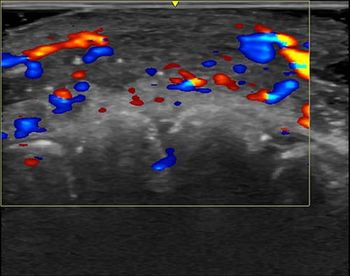
Philips Medical debuts C-arm portfolio at ECR
The ECR exhibit floor served as the launch pad for a line of C-arm systems from Philips Medical Systems. The line includes the BV Libra, BV Endura, and BV Pulsera. All three have cleared the FDA. Prices range from around 60,000 euros ($55,840 U.S.) for
The ECR exhibit floor served as the launch pad for a line of C-arm systems from Philips Medical Systems. The line includes the BV Libra, BV Endura, and BV Pulsera. All three have cleared the FDA. Prices range from around 60,000 euros ($55,840 U.S.) for BV Libra up to 120,000 euros ($111,700 U.S.) for BV Pulsera.
Although the value-priced BV Libra has a fixed anode, it offers pulsed fluoro for high image quality at half the normal fluoroscopy dose. The system, which features a 9-inch triple-mode image intensifier, also has Philips’ proprietary beam filters to reduce skin dose by as much as 40% over conventional filters.
“With its small footprint, BV Libra is designed for routine surgical procedures, but it can also be used for intensive care, outpatient, and emergency room procedures,” said Dirk Joubert, Philips marketing director for surgery.
The target market for BV Libra is orthopedics, in both the hospital and the outpatient clinic setting, as well as emerging markets in less developed countries. It replaces the BV 25 system, which is no longer being manufactured.
BV Endura, which replaces BV 300, includes the features of BV Libra but offers a 12-inch triple-mode image intensifier. BV Endura is being marketed as a high-end multifunctional system for routine and vascular imaging.
BV Pulsera will be marketed to hospitals performing the most complicated and challenging interventional procedures. Key features include rotating anode technology, automatic high-penetration mode (autoHip), compact design, pulsed exposure mode to improve image contrast and eliminate motion artifact for bolus chase and cardiovascular exams, and SmartMask, which allows reuse of previously acquired images for vascular interventional work.
“The Pulsera gives virtually unrestricted access to the patient, which is needed for interventional cardiovascular and pain management procedures,” Joubert said.
Philips, which pioneered the x-ray C-arm in 1953, believes the new system will allow the company to hold its top ranking in the C-arm market. More than 20,000 Philips C-arm systems are in use around the world.
Newsletter
Stay at the forefront of radiology with the Diagnostic Imaging newsletter, delivering the latest news, clinical insights, and imaging advancements for today’s radiologists.




























